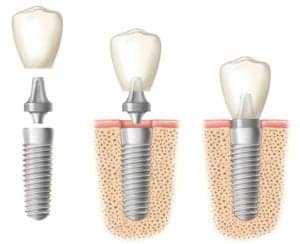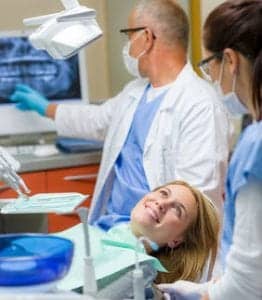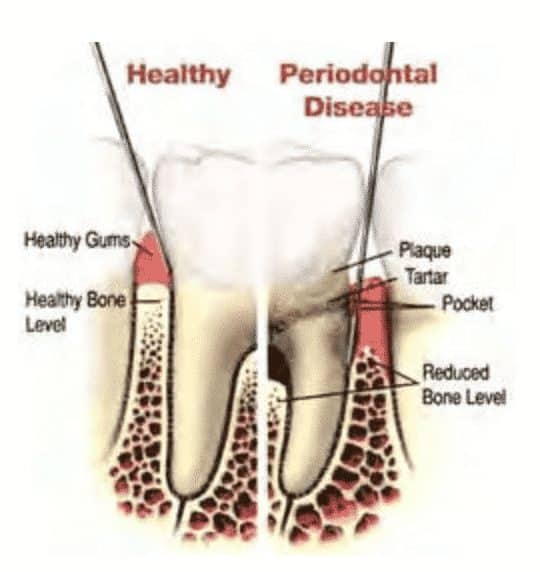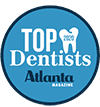I don’t go to the dentist much, mostly because they terrify me. However, lately, I’ve noticed my gums seem to be disappearing and going upward. Is this a dental emergency? My gums look healthy other than that. They’re the right color and I’ve only had one cavity in my entire life. I don’t know what’s going on.
Amber
Dear Amber,

You Don’t Have to Fear the Dentist
It sounds like you’re describing receding gums. There are several causes for this. The two main ones are gum disease and aggressive brushing.
A Dentist Can Help Find the Cause of Recessive Gums
Gum Disease
A dental exam can tell you right away if the cause is gum disease. This is the most serious reason for gum recession and it needs to be addressed as quickly as possible. If left untreated, it will lead to your teeth becoming loose and falling out. Then, you’ll need tooth replacement procedures such as dental implants.
I do realize you have dental anxiety. I’d like to help you with that. There are quite a few dentists these days who offer dental sedation. It is a huge help to patients who would rather be anywhere else than a dental chair. It’s so helpful, in fact, that many patients simply sleep through their appointments. Finding a compassionate sedation dentist can switch dental appointments from being something you dread to a time where you look forward to a nice nap.
Aggressive Brushing
If you use a hard bristled brush or press down too hard while brushing your teeth, this can also cause your gums to recede. It wears them down a little at a time.
Pinhole Technique to Restore Gums
There’s a fairly simple solution to restore your gums. There’s a pinhole gum surgical technique which is scalpel-free and suture-free. It’s patient-friendly and you can get back to your life much quicker because you don’t have the same type of healing time needed with more traditional surgical techniques.
This blog is brought to you by Dr. David Pumphrey.


 That’s why
That’s why  Nitrous oxide is a sedative that is breathed in along with oxygen through your nose. It’s often been called “laughing gas” because it produces a very nice relaxed state that can ease any anxiety and help novocaine work more effectively. The great thing about novocaine is that once you stop breathing it, the effects are gone immediately, so you can drive and return to work or other activities quickly.
Nitrous oxide is a sedative that is breathed in along with oxygen through your nose. It’s often been called “laughing gas” because it produces a very nice relaxed state that can ease any anxiety and help novocaine work more effectively. The great thing about novocaine is that once you stop breathing it, the effects are gone immediately, so you can drive and return to work or other activities quickly. IV sedation causes a more profoundly relaxed state, almost like sleep. You will be awake and aware enough to respond to requests to open your mouth, etc., but you will likely not remember anything about the procedure. Again, with this type of sedation, you will need someone to drive you home after your appointment.
IV sedation causes a more profoundly relaxed state, almost like sleep. You will be awake and aware enough to respond to requests to open your mouth, etc., but you will likely not remember anything about the procedure. Again, with this type of sedation, you will need someone to drive you home after your appointment.
 More often, though, loose teeth point to gum or periodontal disease. Other symptoms that accompany periodontal disease can include bleeding gums, tender or swollen gums, gums that have pulled away from the teeth, pus between the teeth and gums, persistent bad breath, and changes in the way your teeth fit together. As you can see from the image to the left, periodontal disease breaks down the supporting structures of the tooth.
More often, though, loose teeth point to gum or periodontal disease. Other symptoms that accompany periodontal disease can include bleeding gums, tender or swollen gums, gums that have pulled away from the teeth, pus between the teeth and gums, persistent bad breath, and changes in the way your teeth fit together. As you can see from the image to the left, periodontal disease breaks down the supporting structures of the tooth.




